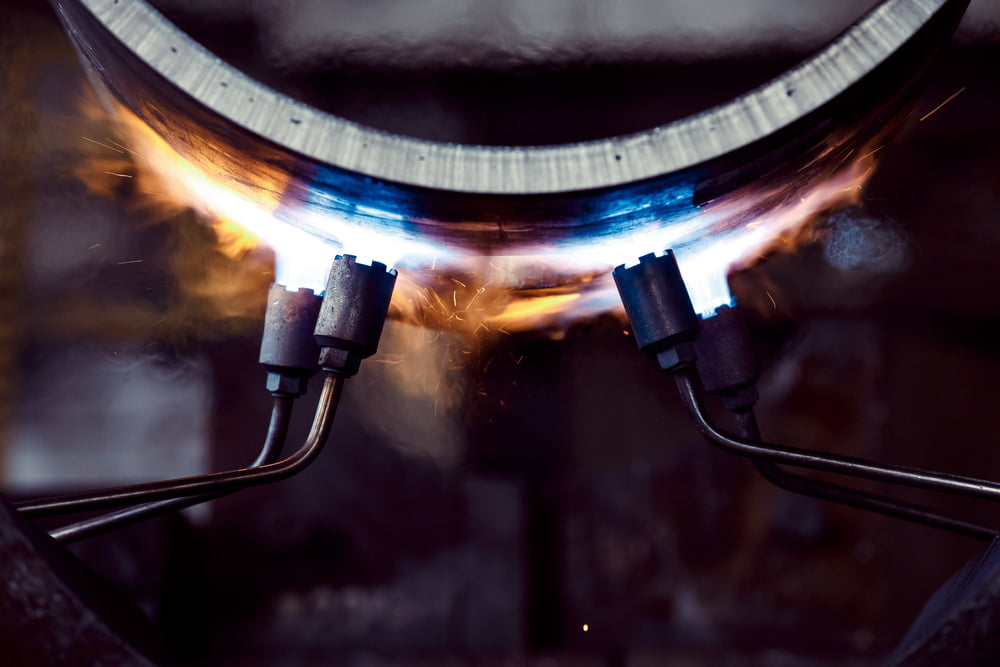Table of Contents
Have you ever wondered about the silent threats lurking within the metal framework of our buildings? Today, we’re shedding light on the often underestimated dangers of overheating and its impact on metal structures. From the microscopic changes to visible wear and tear, let’s dive into the world of thermal challenges and how they pose a risk to the very foundations we build upon.
Thermal Expansion and Contraction
Picture this: a metal structure exposed to the relentless dance of temperature fluctuations. As the sun beats down, the metal expands; when the cool night arrives, it contracts. This constant ballet, known as thermal expansion and contraction, might seem harmless, but it’s a silent force that can compromise structural integrity over time. Cracks, warping, and stress fractures are the unwelcome outcomes, leading to weakened buildings that stand on shaky ground.
So, what is the solution? For most metal buildings, it’s going to be high-quality insulation and cooling systems. If you want to invest in insulation, make sure you check out bluetexinsulation.com. There are highly rated products that can be installed by yourself thanks to the detailed instructions.
Material Weakening
When metal is subjected to high temperatures for extended periods, it undergoes a transformation. The once robust material begins to weaken, jeopardizing its load-bearing capacity and overall strength. Think of it like a superhero losing their powers – the metal becomes more susceptible to stress, increasing the likelihood of structural failures. Real-world incidents abound where material weakening due to overheating has resulted in unexpected and sometimes catastrophic consequences.
Corrosion and Oxidation
Overheating doesn’t just affect the strength of metal; it accelerates the corrosion and oxidation process. High temperatures create an environment conducive to rust and degradation, corroding the very surface that protects the metal. The building, once a shining example of architectural prowess, starts to show signs of wear, and its structural integrity becomes compromised. It’s a slow, insidious decay that often goes unnoticed until the damage is extensive.
Aesthetic Damage
Beyond the structural concerns, overheating takes a toll on the aesthetic appeal of metal buildings. Paint fades, protective coatings deteriorate, and the once vibrant exterior loses its luster. It’s like a fading photograph, capturing the gradual decline of a building’s visual charm. Aesthetics may seem secondary, but they contribute to the overall value and perception of the structure, making the impact of overheating more than skin deep.
Impact on Electrical and Mechanical Systems
As temperatures soar, so do the risks for electrical and mechanical systems within metal buildings. Wiring and equipment strained by overheating face a higher likelihood of malfunctions and failures. Beyond inconvenience, this poses safety hazards and can result in unexpected downtime. Imagine a building’s vital systems overheating and failing simultaneously – a scenario that underscores the need for proactive measures to prevent such disruptions.
Financial Implications
The repercussions of overheating extend far beyond the physical realm; they hit us where it hurts most – our wallets. The financial toll of repairing structural damage, replacing weakened materials, and addressing aesthetic concerns can be staggering. For building owners and stakeholders, the hidden dangers of overheating translate to significant, and often unexpected, financial investments. The cost of neglecting temperature control is a hefty one.
Elements You Want from a Metal Building Insulation Provider
You’ve decided to get your hands on insulation for your metal building. But, many companies are promising you the world. They claim to have the best quality product, but now the decision is in your hands. If you’re happy with all of the products, there are a few other elements you can consider to narrow down your options. Let’s take a look at what they are so you can make the final decision.
Free Shipping
You’re going to be spending a lot of money on insulation. This is particularly true if you’ve gone for the best product and you have a large building. Thus, the last thing you want is to pay for is shipping. This is why you should look for a metal building insulation provider that offers you free delivery. It keeps your costs down and makes you more satisfied with your order.
Sample Kits
Are you undecided on what type of insulation is best for your building? Look for a metal building insulation provider that will give you sample kits before you buy. This allows you to see and feel them in person, ensuring their quality. Plus, it gives the company time to analyse your building and send you the best suggestions, demonstrating their experience. Therefore, take a look at the website to see if you can get your hands on some sample kits. Ideally, you don’t want to buy them, and experienced providers will be so confident in their products that they won’t require you to do this.
Installation Instructions
Not every business wants to hire professionals to install insulation. You might be looking to keep your costs down, which means you want to install it by yourself. This is possible with some experience and when you choose the right product. In addition, there are many providers that will support you through this process. Indeed, you want to search for one that provides detailed instructions and assistance. This can help you complete this project without having to spend money on professional installation services. It can save you a lot of money in the process, meaning you can spend more on quality insulation.
Conclusion
In the grand narrative of construction and architecture, the dangers of overheating often play a subtle but impactful role. As we wrap up our exploration, let’s remember that temperature control is not merely a luxury but a necessity. The silent adversaries of thermal expansion, material weakening, corrosion, and more may be hidden, but with awareness and proactive measures, we can ensure our metal structures stand strong against the test of time. It’s time to let our buildings breathe, adapt, and thrive in the face of temperature challenges.





